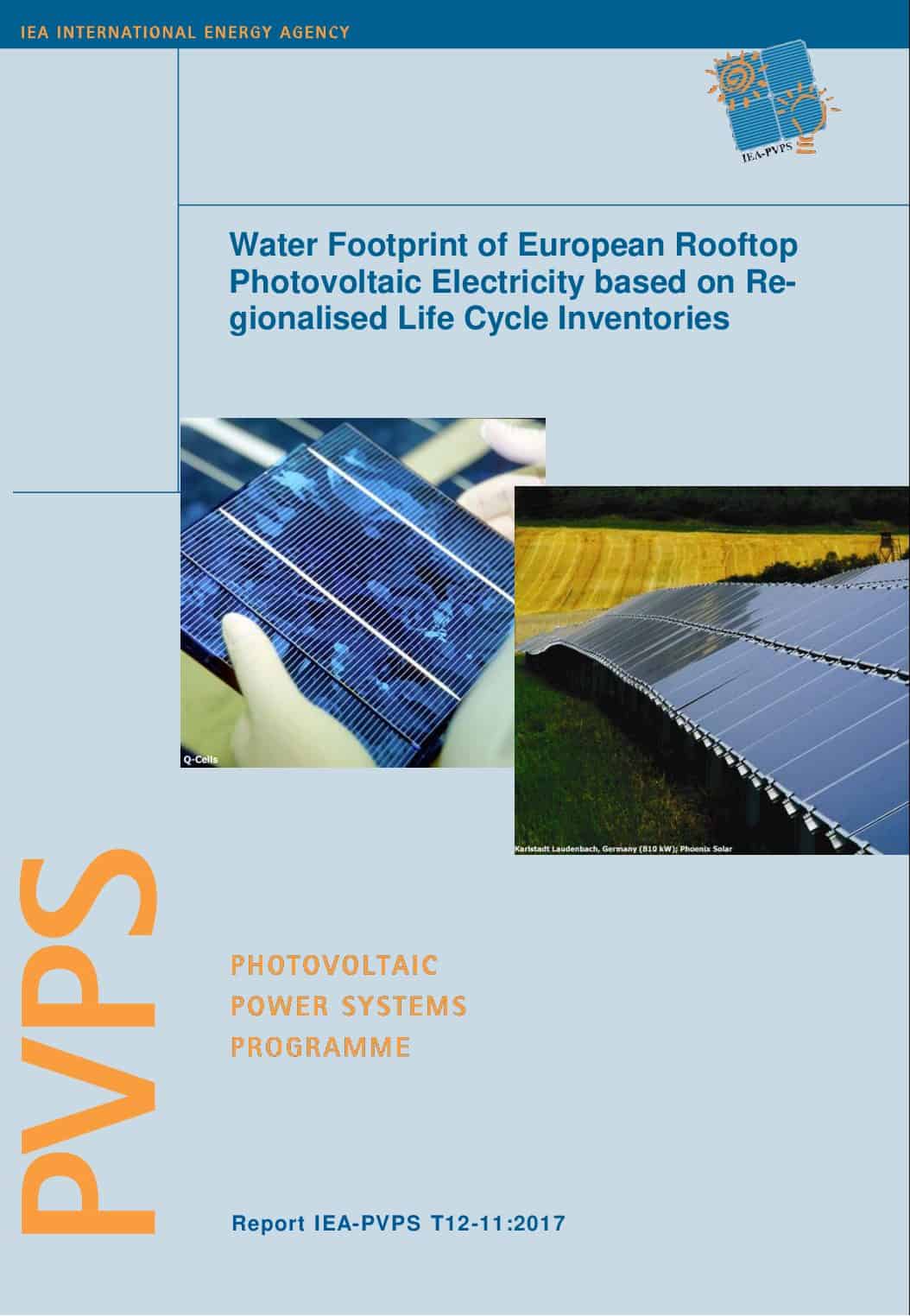The water use of photovoltaic (PV) electricity has been investigated in very few studies so far, which may be due to the low water demand of PV systems during operation. In this study, the water consumption and water withdrawal of electricity generated by PV systems were assessed by considering all life cycle stages and by taking account of country-level regional differences in water availability. The life cycle inventories of the manufacture of monocrystalline silicon (mono-Si) and cadmium telluride (CdTe) PV modules are based on data collected between 2010 and 2013 and take account of the shares of different countries in total global production.
The water use in the life cycle inventories of European rooftop PV systems and conventional electricity generation technologies was regionalised to the country or region (such as continents, political or geographic entities of several countries) level and complemented by the share of water lost by evaporation.
The AWARE (Available WAter REmaining) method was used to assess the water stress impact caused by water consumption and water withdrawal of electricity generation by European rooftop PV systems as well as by reservoir hydroelectric power plants and large-scale hard coal and nuclear power plants in Europe.The functional unit of this analysis is 1 kWh of alternating current (AC) electricity (at busbar). The life cycle inventories were linked to KBOB (Coordination Group for Construction and Property Services) life cycle inventory data DQRv2:2016, which are based on ecoinvent data v2.2 and contain updated life cycle inventory data in relevant economic sectors.
This study was financed by the Swiss Federal Office of Energy (SFOE) and carried out in the framework of the Task 12 of the Photovoltaic Power Systems Programme (PVPS) of the International Energy Agency (IEA).
